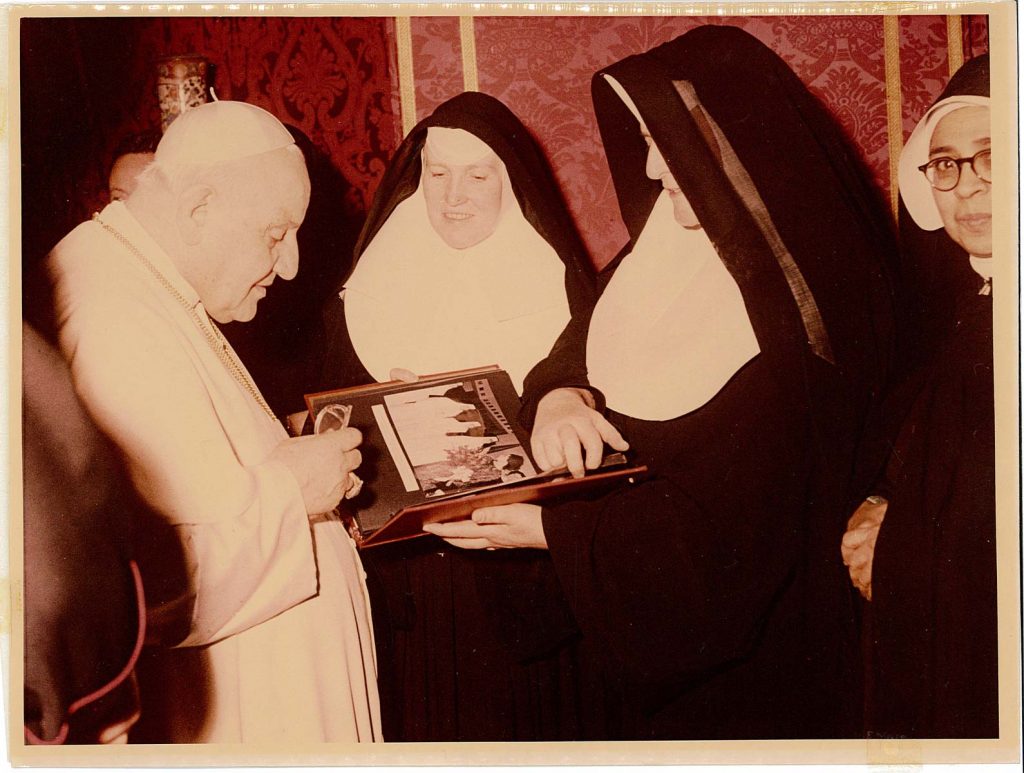“Can Sister Mary Polycarp Come to Our Class Reunion?” – A Day at the Archives
share
By Betsy Johnson, assistant archivist at Mercy Heritage Center
The Sisters of Mercy have long honored those who came before them by keeping records in community archives. Historic records are stored at Mercy Heritage Center in Belmont, North Carolina, while five community archivists collect and maintain more recent records. Each archivist is committed to caring for these records and helping people use them—to locate information for someone writing a dissertation on Mercy’s influence on nursing, for example, or to find historic photographs of a ministry for a museum exhibit. On other occasions, we provide answers to questions like: “My great-aunt was a Sister of Mercy. Can you tell me about her life?” or “Whatever happened to my favorite teacher, Sister Mary Polycarp?”
But how exactly does an archivist find the answers to these questions? Here at Mercy Heritage Center, it usually means a trip to “the stacks” where the records are stored in a special climate controlled area of the building. Although much of our world today is online, the majority of our historic records must be accessed the old-fashioned way—by knowing the unique history of a community and how its files are organized.
Taking the example above, how would we look up information about Sister Mary Polycarp? A request like this one for a former teacher, or a group of former teachers, is especially common for class reunions and similar events. But there are a few big steps we have to take to reconnect Sister Mary Polycarp and her former pupils.
Finding Sister Mary Polycarp
Step 1
What is her name today? Many sisters returned to their original baptismal names following Vatican II. Sister Mary Polycarp could very well go by Sister Patricia now.
Step 2
How about her last name? Our archives on individuals are currently organized by surnames, so if a former student doesn’t know or can’t remember Sister Mary Polycarp’s last name, our digging must go deeper. Some communities kept a record of sisters assigned to specific ministries, including their surnames; others listed only their religious names; in other places, the record was not saved, and we must turn to other sources like class rosters, yearbooks and annals—convent daybooks recording residents and daily events.
Step 3
Once we have a first and last name, we turn to our databases to see if the sister is living or deceased. If she is deceased, we share general biographic information with the inquirer. And in the best cases, if we find that Sister Mary Polycarp is living, we let her know that someone is seeking to get in touch with her—and hopefully she gets an invite to that class reunion!
Other Requests
Requests for photographs of a location, person or time can lead to similar journeys through the files. Searching for evidence of a decision made, a property sold or a ministry founded sometimes feel like a puzzle, as we try and recreate a trail of historical events that lead us to the present time.
This work, though challenging, is a significant and exciting responsibility for Mercy archivists. We consider it a privilege to share this history, to assist people with questions and to gather and maintain the history of the Sisters of Mercy as it moves forward. If you have a question or research project related to Mercy history, please feel free to contact us! For larger requests, please help us to help you by sending your request at least one month before you need the information. You can send your requests to: ggerlich@sistersofmercy.org or ejohnson@sistersofmercy.org.
